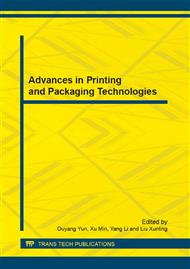p.186
p.190
p.195
p.203
p.207
p.213
p.217
p.223
p.227
The Construction of a Knowledge Discovery Model on In-Depth Analysis and Reporting by Exploring Taiwan’s Examination Database
Abstract:
Knowledge Discovery related theories and applications have grown and flourished greatly in recent years. Huge amount of data could be converted into useful knowledge which then could be applied to management related decision-making and in-depth analysis and reporting applications. With the emergence of computer power and internet technology, computer-aided tools have changed the manners and methods by which journalists gathered information, conducted investigations, interpreted facts and reported news. Journalists and reporters slowly but surely began to use the concept of database journalism in data collection and analysis to strengthen the accuracy and depth layers of their news reports. The purpose of this study was to utilize the data warehouse technologies to establish a knowledge discovery model, which could be used by journalists and reporters to facilitate their data collecting and analysis skills as well as enhancing their in-depth report writing abilities. The Ministry of Examination in Taiwan has been in charge of the recruitment of talents for various public positions through specifically designed examinations befitting of the job requirements and fields of applications. This study explored, mined and screened through the huge amount of database accumulated and managed by the Ministry of Examination as the sampling source. The research methods included literature reviews combined with data warehouse and data mining technologies to investigate the patterns, consistencies and/or anomalies hidden in the examination database. A knowledge discovery model for in-depth reporting was established as the study result. Moreover, the study adopted Professional and Technical Personnel Examinations as an empirical case, using data mining method to understand the pattern and setting rules of it. The study found that the categories of examinations were numerous and ever-changing in the early-stage of the examination history, but remained completely unaltered for the last two decades. It was recommended to adjust the settings of examination categories in response to the numerous changes in various industries. Besides, the setting of the university departments and related courses planning also should be adjusted in accordance with this study result. The Knowledge Discovery model established in this study by exploring the Ministry of Examination’s Database indicated that it was feasible to use data warehouse technologies to facilitate in-depth analysis and reporting. In the future, the database can be widely used in improving the quality and accuracy of the news reporting.
Info:
Periodical:
Pages:
207-212
Citation:
Online since:
December 2012
Authors:
Price:
Сopyright:
© 2013 Trans Tech Publications Ltd. All Rights Reserved
Share:
Citation:


